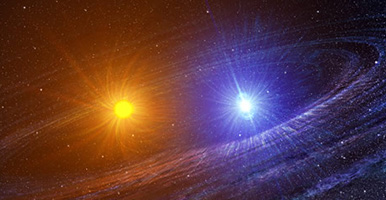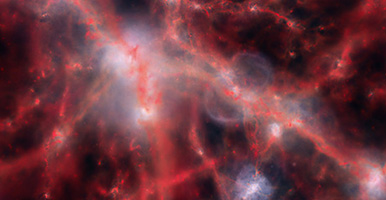Galaxy formation and evolution
Research into galaxy formation and evolution from both observational and theoretical perspectives
From population studies of dwarf galaxies up to the most massive clusters of galaxies, supermassive black holes and detailed modelling of the internal structure of galaxies.
We are involved in a number of major international observational survey projects such as:
-
UKIDSS: The next generation near-infrared sky survey, it will survey 7500 square degrees of the Northern sky, extending over both high and low Galactic latitudes
- Sloan Digital Sky Survey (SDSS): A major multi-filter imaging and spectroscopic redshift survey. It has detailed three-dimensional maps of the
Universe, with deep multi-color images of one third of the sky, and spectra
for more than three million astronomical objects.
- Gaia: A public spectroscopic survey providing the first homogeneous
overview of the distributions of kinematics and elemental abundances. This
will revolutionise knowledge of Galactic and stellar evolution.
- GAMA: A project to exploit the latest generation of ground-based and
space-borne survey facilities to study cosmology and galaxy formation and
evolution
- XMM Cluster Survey (XCS): A serendipitous X-ray galaxy cluster survey
being conducted using archival data taken by the European Space Agency’s
XMM-Newton satellite
- XXL: The main goal of the project is to constrain the Dark Energy equation
of state using clusters of galaxies
- LOw Frequency Array (LOFAR): A radio telescope working at the lowest frequencies accessible from
Earth. Combining many thousands of simple dipole receivers (just like the
one in your radio at home) with the latest in high tech computing, LOFAR
will be able to survey wide areas of the sky all at once and will open up a
new window for astronomers.
- WHT Enhanced Area Velocity Explorer (WEAVE): A new wide-field multi-object spectrograph for the William Herschel
Telescope. It will allow astronomers to take spectra of up to 1000 stars and
galaxies in a single exposure. This huge leap in observing efficiency will
allow astronomers to tackle several astrophysical problems that until now
have remained out of reach.
- Euclid: A European Space Agency mission to map the geometry of the dark
Universe. Euclid will cover the entire period over which dark energy played
a significant role in accelerating the expansion.
- Large Synoptic Survey Telescope (LSST): The LSST will move quickly between images, yet its large mirror and large field of view — almost 10 square degrees of sky, or 40 times the size of the full moon — will give it the largest light gathering power of any optical telescope in the world.
On a theoretical level, we carry out state-of-the-art cosmological hydrodynamical simulations on some of the largest academic high performance computing (HPC) facilities in the UK and Europe and are active members of the Virgo Consortium.
People
Meet the researchers working within this research group:





